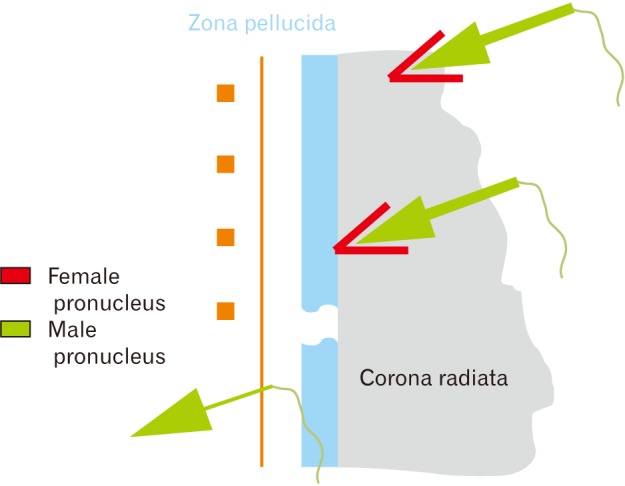1. Moxham BJ, Emmanouil-Nikoloussi E, Standley H, Brenner E, Plaisant O, Brichova H, Pais D, Stabile I, Borg J, Chirculescu A. The attitudes of medical students in Europe toward the clinical importance of embryology. Clin Anat. 2016; 29:144–150. PMID:
26538399.
2. Zaletel I, Marić G, Gazibara T, Rakočević J, Labudović Borović M, Puškaš N, Bajčetić M. Relevance and attitudes toward histology and embryology course through the eyes of freshmen and senior medical students: Experience from Serbia. Ann Anat. 2016; 208:217–221. PMID:
27496251.
3. Marsh KR, Giffin BF, Lowrie DJ Jr. Medical student retention of embryonic development: impact of the dimensions added by multimedia tutorials. Anat Sci Educ. 2008; 1:252–257. PMID:
19109854.
4. Moraes SG, Pereira LA. A multimedia approach for teaching human embryology: Development and evaluation of a methodology. Ann Anat. 2010; 192:388–395. PMID:
20615679.
5. Abid B, Hentati N, Chevallier JM, Ghorbel A, Delmas V, Douard R. Traditional versus three-dimensional teaching of peritoneal embryogenesis: a comparative prospective study. Surg Radiol Anat. 2010; 32:647–652. PMID:
20352215.
6. Peterson DC, Mlynarczyk GS. Analysis of traditional versus three-dimensional augmented curriculum on anatomical learning outcome measures. Anat Sci Educ. 2016; 9:529–536. PMID:
27078503.
7. Loke YH, Harahsheh AS, Krieger A, Olivieri LJ. Usage of 3D models of tetralogy of Fallot for medical education: impact on learning congenital heart disease. BMC Med Educ. 2017; 17:54. PMID:
28284205.
8. Othman N, Amiruddin MH. Different perspectives of learning styles from VARK model. Procedia Soc Behav Sci. 2010; 7:652–660.
9. Meyer AJ, Stomski NJ, Innes SI, Armson AJ. VARK learning preferences and mobile anatomy software application use in preclinical chiropractic students. Anat Sci Educ. 2016; 9:247–254. PMID:
26109371.
10. Lujan HL, DiCarlo SE. First-year medical students prefer multiple learning styles. Adv Physiol Educ. 2006; 30:13–16. PMID:
16481603.
11. Dobson JL. A comparison between learning style preferences and sex, status, and course performance. Adv Physiol Educ. 2010; 34:197–204. PMID:
21098387.
12. Liew SC, Sidhu J, Barua A. The relationship between learning preferences (styles and approaches) and learning outcomes among pre-clinical undergraduate medical students. BMC Med Educ. 2015; 15:44. PMID:
25889887.
13. O'Mahony SM, Sbayeh A, Horgan M, O'Flynn S, O'Tuathaigh CM. Association between learning style preferences and anatomy assessment outcomes in graduate-entry and undergraduate medical students. Anat Sci Educ. 2016; 9:391–399. PMID:
26845590.
14. Gentner D, Markman AB. Structure mapping in analogy and similarity. Am Psychol. 1997; 52:45–56.
15. Holyoak KJ, Thagard P. The analogical mind. Am Psychol. 1997; 52:35–44. PMID:
9017931.
16. Masters J, Christensen M. Please pass the cauliflower: a recipe for introducing undergraduate students to brain structure and function. Adv Physiol Educ. 2000; 24:22–29. PMID:
11209561.
17. Pena GP, Andrade-Filho Jde S. Analogies in medicine: valuable for learning, reasoning, remembering and naming. Adv Health Sci Educ Theory Pract. 2010; 15:609–619. PMID:
18528776.
18. Frieden IJ, Dolev JC. Medical analogies: their role in teaching dermatology to medical professionals and patients. J Am Acad Dermatol. 2005; 53:863–866. PMID:
16243140.
19. Brown S, Salter S. Analogies in science and science teaching. Adv Physiol Educ. 2010; 34:167–169. PMID:
21098382.
20. Tunuguntla R, Rodriguez O, Ruiz JG, Qadri SS, Mintzer MJ, Van Zuilen MH, Roos BA. Computer-based animations and static graphics as medical student aids in learning home safety assessment: a randomized controlled trial. Med Teach. 2008; 30:815–817. PMID:
18946826.
21. Daly CJ, Bulloch JM, Ma M, Aidulis D. A comparison of animated versus static images in an instructional multimedia presentation. Adv Physiol Educ. 2016; 40:201–205. PMID:
27105738.
22. Ayres P, Marcus N, Chan C, Qian N. Learning hand manipulative tasks: when instructional animations are superior to equivalent static representations. Comput Human Behav. 2009; 25:348–353.
23. Wong A, Marcus N, Ayres P, Smith L, Cooper GA, Pass F, Sweller J. Instructional animations can be superior to statics when learning human motor skills. Comput Human Behav. 2009; 25:339–347.
24. Saxena V, Natarajan P, O'Sullivan PS, Jain S. Effect of the use of instructional anatomy videos on student performance. Anat Sci Educ. 2008; 1:159–165. PMID:
19177403.
25. Mayer RE, Moreno R. Nine ways to reduce cognitive load in multimedia learning. Educ Psychol. 2003; 38:43–52.
26. Hu Y, Gao H, Wofford MM, Violato C. A longitudinal study in learning preferences and academic performance in first year medical school. Anat Sci Educ. 2018; 11:488–495. PMID:
29251831.
27. Schleich JM, Dillenseger JL, Houyel L, Almange C, Anderson RH. A new dynamic 3D virtual methodology for teaching the mechanics of atrial septation as seen in the human heart. Anat Sci Educ. 2009; 2:69–77. PMID:
19363807.
28. Yammine K, Violato C. A meta-analysis of the educational effectiveness of three-dimensional visualization technologies in teaching anatomy. Anat Sci Educ. 2015; 8:525–538. PMID:
25557582.
29. Van Nuland SE, Rogers KA. E-learning, dual-task, and cognitive load: the anatomy of a failed experiment. Anat Sci Educ. 2016; 9:186–196. PMID:
26480302.
30. Paik ES, Schraw G. Learning with animation and the illusion of understanding. J Educ Psychol. 2013; 105:278–289.
31. Hoyek N, Collet C, Di Rienzo F, De Almeida M, Guillot A. Effectiveness of three-dimensional digital animation in teaching human anatomy in an authentic classroom context. Anat Sci Educ. 2014; 7:430–437. PMID:
24678034.
32. Berman AC. Good teaching is good teaching: a narrative review for effective medical educators. Anat Sci Educ. 2015; 8:386–394. PMID:
25907166.
33. Steinert Y, Snell LS. Interactive lecturing : strategies for increasing participation in large group presentations. Med Teach. 1999; 21:37–42.








 PDF
PDF ePub
ePub Citation
Citation Print
Print




 XML Download
XML Download